
- Index
- Artist
- Antonio Devity (4)
- Charles Levier (3)
- Henri Matisse (8)
- Illegible (5)
- Illegible Signature (58)
- Jean Daumier (3)
- Julius Polek (3)
- L. Sihiinzel (4)
- London (4)
- Maren (3)
- Max Ernst (6)
- Reinald Morgen (3)
- Remedios Varo (7)
- Salvador Dali (6)
- See Description (9)
- T.bailey (4)
- Unknown (109)
- Unsigned (7)
- Yu Liang Jin (4)
- Yu Yin Xin (4)
- Other (944)
- Framing
- Material
- Signed By
- Agapito Labios (2)
- Anton Gutknecht (2)
- Antonio Devity (2)
- Arthur Hierer (2)
- Artist (22)
- Augustus Spencer (2)
- Bailey (4)
- Charles Levier (2)
- Corot (4)
- E.w. Strack (2)
- Géo FranÇois (2)
- Illegible (8)
- Illegible Signature (53)
- J E Lemke (2)
- John Hughes (2)
- Louis Siegriest (2)
- Mario Cortiello (2)
- S. Vasiu? (2)
- Unknown (4)
- Wilson (2)
- Other (1075)
- Size
- Unit Of Sale
Gustave Lino Antique Italian Modern Landscape Oil Painting Old Capri Island 1950
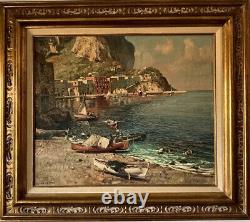
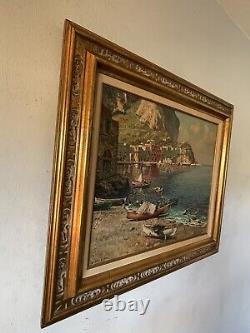
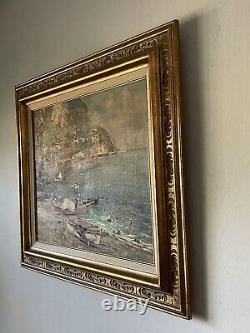
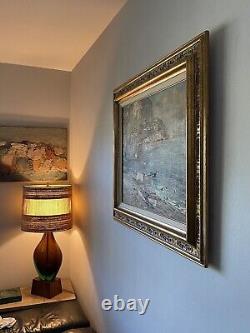
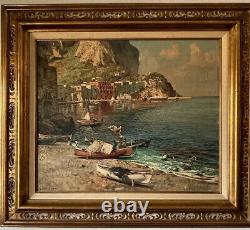

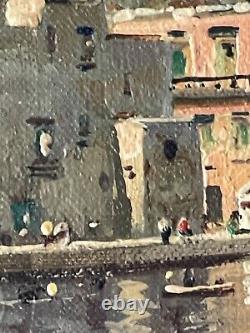
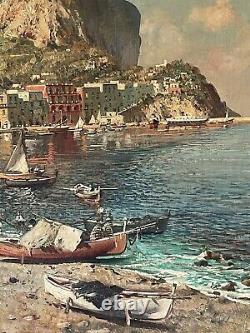
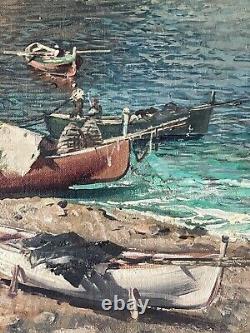
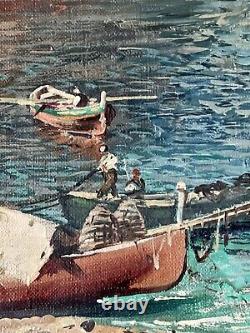
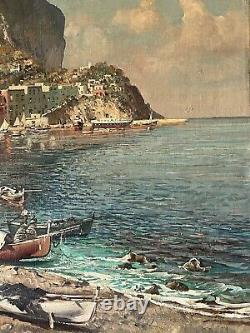
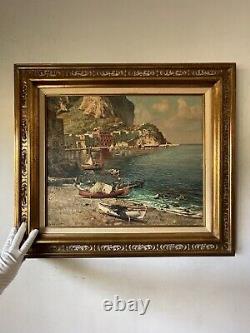


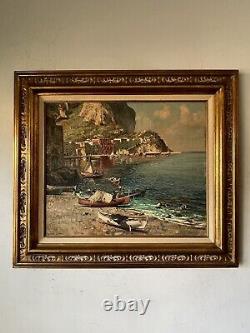
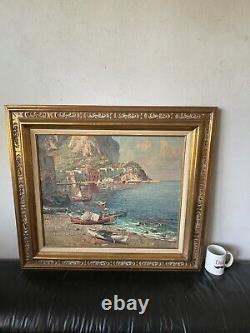

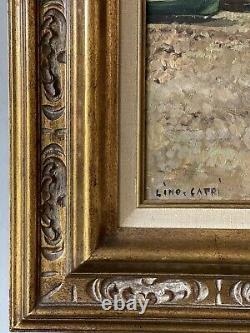


EXCEPTIONAL ANTIQUE ITALIAN LANDSCAPE IMPRESSIONIST OIL PAINTING ON CANVAS BY REVERED FRENCH PAINTER GUSTAVE LINO. THIS WORK DEPICTS A CAPTIVATING VIEW OF CAPRI ISLAND IN ITALY'S BAY OF NAPLES. FAMED FOR ITS RUGGED LANDSCAPE, UPSCALE HOTELS, AND SHOPPING, FROM DESIGNER FASHION TO LIMONCELLO AND HANDMADE SANDALS.
ONE OF THE BEST-KNOWN NATURAL SITES IS THE BLUE GROTTO, A DARK TAVERN WHERE THE SEA GLOWS ELECTRIC BLUE, THE RESULT OF SUNLIGHT PASSING THROUGH AN UNDERWATER CAVE. THIS WORK IS METICULOUSLY RENDERED IN THE MODERNIST ABSTRACT STYLE. GUSTAVE LINO IS A MASTER FOR HIS INNATE ABILITY FOR PAINSTAKING ATTENTION TO DETAIL.
DIMENSIONS: 29"H x 33"W. Gustave Lino (1893 - 1961) was active/lived in France. Gustave Lino is known for Painting. Born in Mulhouse in 1893, Gustave Lino developed a pronounced taste for Art very quickly.
During his visits to the Museum of Fine Arts in his hometown, he exercises his eye. In 1912, at nineteen, the artist chose to explore the South of France and discovered Provence and the Mediterranean. He decided to settle in Marseille. However, isolated from the rest of his family, the artist spontaneously opted to embark on a journey to Algeria.Particularly seduced and marked by the aesthetics of this country, he leaft his luggages there. In 1913, when the First World War broke out, Lino was interned as a civilian in the Corbara convent in Corsica.
Indeed, born in Mulhouse, the artist was of German nationality, as the city had been part of the German Empire since 1871. The conditions of incarceration there being quite free and flexible, the artist chose to devote this period to studying the practice of painting, trained by a German painter, who sharpened his eye and exercised his hand. His productions remain on certain buildings on the Isle of Beauty. Particularly, he produced the religious decorations for the Malaspena-Massa castle in Belgodère, a small French commune situated in the departmental district of Haute-Corse, as well as historical decorations for the Solferino Hotel in Ajaccio.
Upon his return to Algeria, he joined the studio of Georges-Antoine Rochegrosse, a French history painter, decorator and illustrator. His master, a member of the jury of the Salon des artistes français since 1900, encouraged him to exhibit there in 1926. He also placed his paintings on the picture rails of the Danton gallery, located in Paris, rue La Boétie, in 1927.
In quest of new subjects, Gustave Lino chose to set up his easel in Spain and Tunisia, in order to perfect his plastic training. There he discovered a completely different management of contrasts and colours. His artistic production, from then on, remains more clear-cut and his touch becomes more assertive.
He specializes in the representation of seascapes, still lifes and landscapes. His figurations of ports and bays of Algiers, treated in light tones, testify an influence of Albert Marquet, french painter and draftsman, on his work. Indeed, Marquet, in solidarity with the Fauvist movement, travelled throughout France, Italy, the Maghreb, Tunisia (where he settled for six months), and the Near East.
Lino borrows those surrounded figures, those flat areas of bright colors and this synthesis of forms. He then translates the scenes of life in the heart of Algerian streets, the animation of markets, as well as oriental landscapes, which he discovers during numerous stays in the Algerian South, in Laghouat, Ghardaïa, Taggourt or El-Oued. In addition to his landscape figurations, the painter devotes himself to the portrait genre.
Some critics link Lino's work to the group of "Painters of Poetic Reality", made up of artists such as Maurice Brianchon, Christian Caillard, Raymond Legueult and Jules Cavaillès. His work was noticed by Albert Camus, who, at the Salon des Artistes Algériens in 1934, wrote: "His marines, although we can feel Marquet's influence, are no less successful, sensitive, fresh and of a single coming". This artist established himself as an eminent member of the Algiers School. Lino's work, which was particularly appreciated, was posthumously awarded the Grand Prix artistique de l'Algérie in 1962. Today he is considered the veteran of Algerian painting. His work was exhibited at the Galerie de l'Institut, rue de Seine in Paris in 1957. Following this exhibition, the city of Paris bought a painting from him, which was exhibited at the Palais du Luxembourg.The Musée d'Art Moderne de la Ville de Paris also presents her artistic production.

